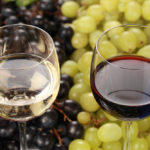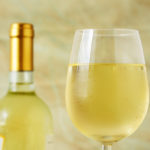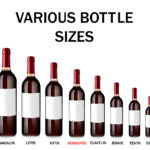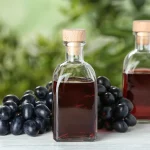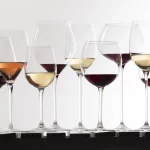If you’re a wine enthusiast, you’ve probably stumbled across the term “wine cooler” at some point in your life. But what exactly is a wine cooler?
For some, it’s a fruity drink, for others it could be an entire refrigerator. For a long time, anyway, wine coolers have always puzzled us, so let’s take a look at all the different meanings…
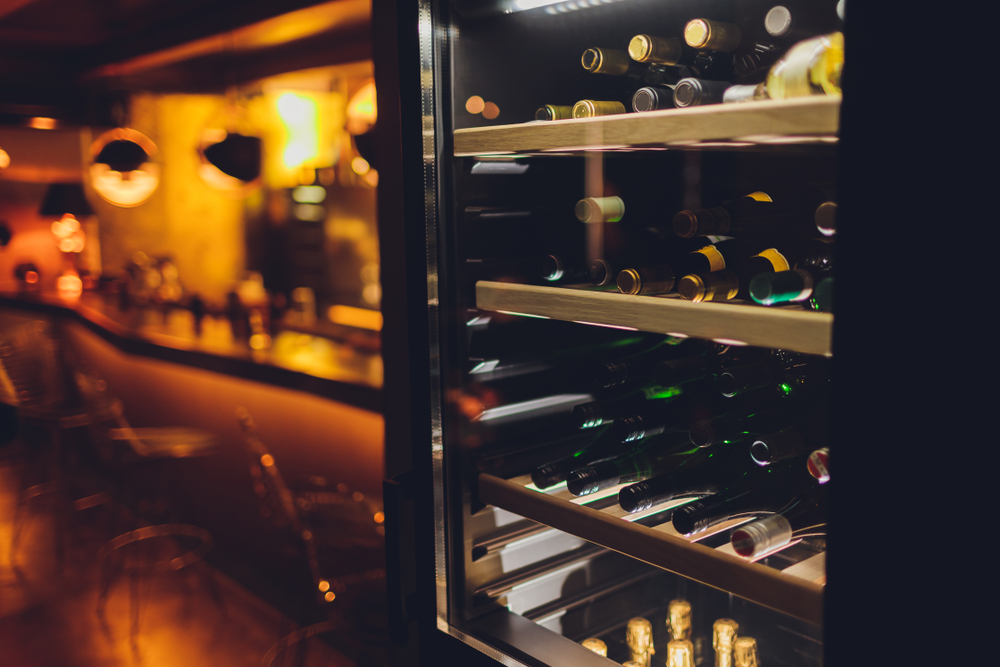
Definitions
Wine cooler has a different meaning in different countries and dialects. To help us out, Collins Dictionary makes a clear distinction between the British and American meaning of the term.
To Americans, and American-English speakers, a wine cooler is a refreshing beverage which is a mix of wine and fruit juice. It’s a carbonated drink which will normally use either soda or carbonated water to add a fizz.
The drink is chilled, and is usually served with ice during warmer months – typically in summer.
As the fruit juice is usually the star of the show, wine coolers are often made with poor quality wine, but it’s not uncommon to use other alcoholic drinks. Some of the more famous wine coolers are made with high-quality ingredients such as Kir and Sangria.
To the British and British-English speakers, a wine cooler is a term which is used to describe a bucket-like container which is filled with ice and is used to chill a bottle of wine before it’s served.
In the hospitality industry, it’s also referred to as a wine bucket to differentiate between the container and a refrigerator.
The final definition of wine cooler comes from the hospitality sector and refers to a refrigerator which has been specifically designed and built to preserve and chill wines. Restaurateurs will often call a wine refrigerator a wine cooler.
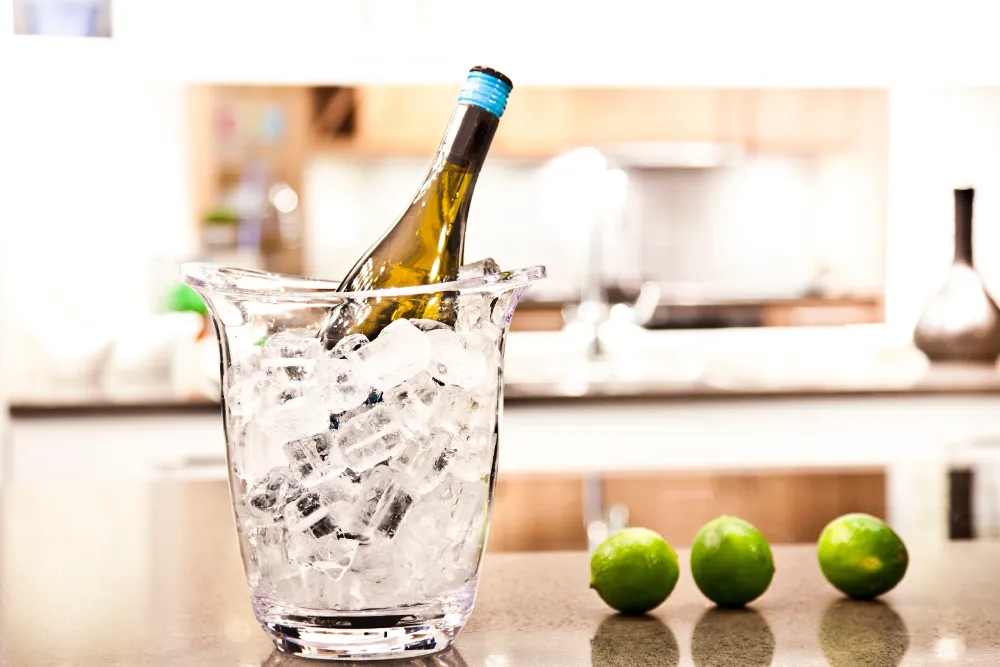
The American Wine Cooler
A lot of millennials and Gen Z drinkers are unfamiliar with wine coolers. Wine coolers first made it big in the 1980s, and were originally home-made.
Most recipes use light white wines – like Pinot Grigio and Chardonnay – mixed with lemon-lime soda which adds a summery freshness to the drink. They were originally seen as a quality drink.
The drink was then bottled by companies like E. & J. Gallo and Seagram’s and sold commercially. They were marketed as a soda pop for adults, which contained artificial fruit flavors and cheap wine, which had as much alcohol as an average craft beer (4 to 6%).
But why was an adult soda pop so popular?
For starters, it was much easier to drink than a glass of dry white, and the easy twist-off cap was a convenient feature. Combined with the flavoring, it’s not hard to see why wine coolers became a phenomenon in an era of low beverage sales.
They were so popular that the Chicago Tribune recorded that wine coolers accounted for 10% of all wine sales in the United States back in 1985.
But why did this beloved drink seemingly fall off the face of the earth?
The Downfall Of The Wine Cooler
The cause of the “death” of the wine cooler is the same reason as to why many of our favorite products die: Taxes. On New Year’s Day back in 1991, Congress quintupled the excise tax on wine from $0.17 per gallon to $1.07 per gallon.
Malt-based beverages also fell victim to the tax increase as the taxes levied on them doubled.
However, malt-based beverages found commonplace amongst American consumers, and companies like Smirnoff Ice and Zima took the lead.
The forefathers (Seagram’s, Bartles and Jaymes etc) of the wine cooler, on the other hand, were forced to shift from wine to malt, and that was the painful end of the refreshing wine cooler.
Are Wine Coolers Making A Comeback?
We thought we saw the last of these summer drinks back in the 90s, however, wine coolers might be making a comeback (just like blazer dresses).
Wine coolers have all the aspects that modern day popular alcoholic beverages have – low ABV and a sweet (but not too sweet) taste.
When combined with a less snobby drinking culture, and a wider variety of artisan ingredients and flavorings (think mint), are companies and mixologists finding ways to bring wine coolers back and make them better than they were before?
What Is A Seltzer?
Seltzers are all the rage right now and you’re probably familiar with White Claw and LaCroix.
Seltzer is a carbonated water which is often combined with fruity flavors to make a light, refreshing drink. A lot of alcohol companies have exploited seltzer’s newfound fame to add a boozy twist to the carbonated water.
More recently there has been a rise in rose seltzers, which combines rose wine and seltzer and adds fruity notes of peach, orange, mandarin, raspberry and cherry.
Hard seltzers aren’t too different to the humble wine cooler, as both have low ABVs and utilize artificial fruit flavors.
The British Perspective
It’s now time to move on to the less thrilling British definition of a wine cooler. A wine cooler is either a bucket of ice, or an appliance which has been specifically designed to preserve and chill wine.
There’s nothing really that interesting or fancy about a bucket of ice, so let’s focus instead on the wine cooler as a refrigerator.
Despite popular belief, both red and white wines need to be stored at a temperature of around 55 degrees Fahrenheit. So, like most things, humans had to invent something that imitated the natural coolness of a wine cellar.
There are several features which are commonplace amongst most wine coolers:
- Adjustable temperatures, which range from 42 degrees Fahrenheit to 65 degrees Fahrenheit.
- Removable racks, which can be organized and arranged to fit any shape and sized bottles of wine horizontally.
- Tempered glass doors so that you can view and display your fantastic wine collection. The tempered glass also protects your wine against UV rays.
Single Vs Dual Zone
This is where wine refrigerators get a little more technical.
A single zone wine cooler is where an appliance has a single refrigeration zone. The temperature is the same level throughout the whole environment, which is preferred by those who want to preserve their wine collection, instead of chilling before serving.
It’s a pretty common misconception that wines need to be stored at different temperatures, and many people tend to chill white wines, and keep red wine out of the fridge.
But, as we mentioned earlier, both red and white wines need to be preserved at around 55 degrees Fahrenheit.
Wine coolers are designed to imitate the conditions of wine cellars, which don’t have adjustable temperature features. So winemakers have succeeded for centuries by preserving different wines and aging them in the same temperature environment.
If you want to chill wine before serving, this is where it can get a little more complicated. Red and white wines have different serving temperatures, so you need a dual zone wine cooler which will allow you to adjust two separate temperature levels.
Dual zone temperatures are more commonly used by restaurants, wine shops and wine tasting rooms, as it allows you to keep several different bottles at different serving temperatures at all times.
Thermoelectric Vs Compressor
Another technical distinction can be made between thermoelectric and compressor wine coolers. Most wine enthusiasts tend to prefer the former over the latter, but it’s a bit more complicated than that.
Thermoelectric wine coolers operate by using thermoelectric technology to keep wines cool, but they do a pretty bad job at chilling the bottle.
These coolers use a fan system that removes warm air from the refrigerator to keep the environment colder than room temperature.
Although this sounds pretty simple, most thermoelectric coolers struggle to maintain a constant temperature when the room temperature exceeds 77 degrees Fahrenheit. This is mainly due to a lack of a proper cooling system.
On the other hand, compressor wine coolers use the same technology as regular fridges. You simply set the temperature, close the door and let the wine cooler take care of the rest.
The room temperature of the environment surrounding the cooler has no influence over the temperature inside. Compressors are great if you want to keep a constant temperature.
When comparing thermoelectric and compressor wine coolers, there’s no particular one that is better than the other.
However, thermoelectric technology is considered environmentally friendly, and the whisper-free operation means that there are minimal levels of vibrations – so you don’t have to worry about the cooler whirring away. In comparison, compressor technology is far from green as they require a lot more energy to function. They’re also pretty noisy and there is a higher level of vibrations which can affect the wine sediment.
The compressor technology, however, does do a better job at keeping a constant temperature so your bottles can remain cool.
What Is The Best Way To Store Both White And Red Wine In The Same Cooler?
If you’re looking to store both white and red wine together, it’s better to opt for a dual zone cooler. This is because there is a slight difference in temperature range between wines.
White wines should be stored between 46 and 56 degrees Fahrenheit, and red wines should be stored at 58 to 68 degrees Fahrenheit.
By using a dual zone cooler, you’re able to maintain two distinct temperature zones within the same cooler. Most dual zone coolers offer a larger storage capacity for one style of wine over the other, so choose a cooler which is best suited to your drinking preference.
You can however, store both red and white wines together in a single zone cooler.
If you’re storing both in a single zone wine cooler, it’s better to place your red wines on the top shelves.
This is because the top is usually the warmer section of the cooler, and there is often a 5 to 8 degree temperature difference between the top and bottom of a single zone wine cooler.
Ultimately, either your red wines will be too cold or your white wines will be too warm depending on where you place them.
Can You Use A Wine Cooler To Store Other Alcoholic Beverages?
Most wine coolers do not offer temperatures which are below 46 degrees Fahrenheit. Because of this limitation it’s better to use a dedicated beverage cooler, or traditional fridge if you want to store any other alcoholic beverages than wine.
As we approach the end of this article, you should hopefully know more about what wine coolers are, and what their different definitions mean.
So, the next time you’re out with your friends and one asks for a wine cooler, you will know they are asking the waiter to bring them a refreshing wine-based cocktail, and not asking for the waiter to bring a whole refrigerator to the table.
Either way, we hope you’ve learnt something you didn’t know before.
- Shrimp Cocktail (and More) Wine Pairing Guide - 09/06/2022
- What Wine Serving Sizes Look Like: Standard Size and More - 08/06/2022
- How Much Sugar is in Wine: Glass and Bottle Sugar Content - 08/06/2022

